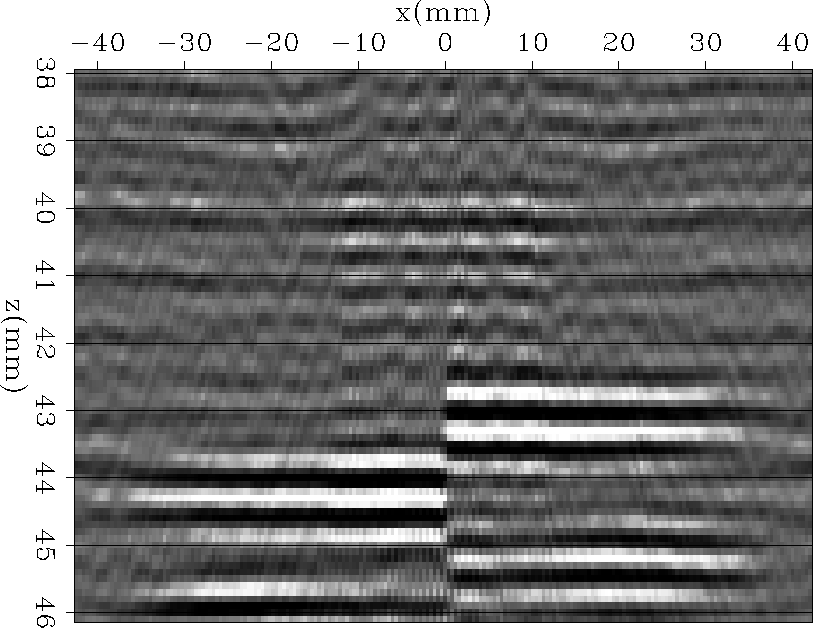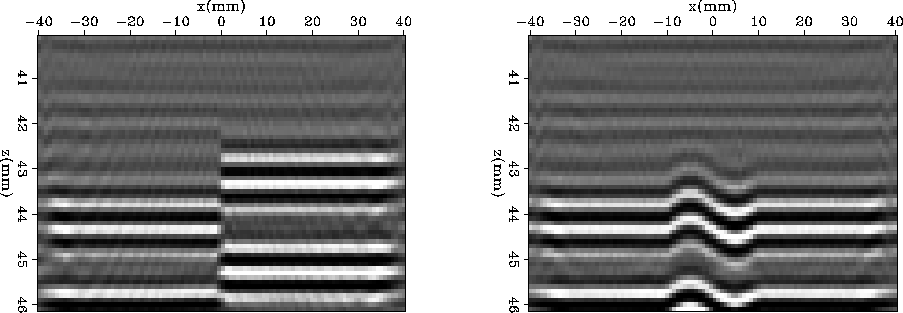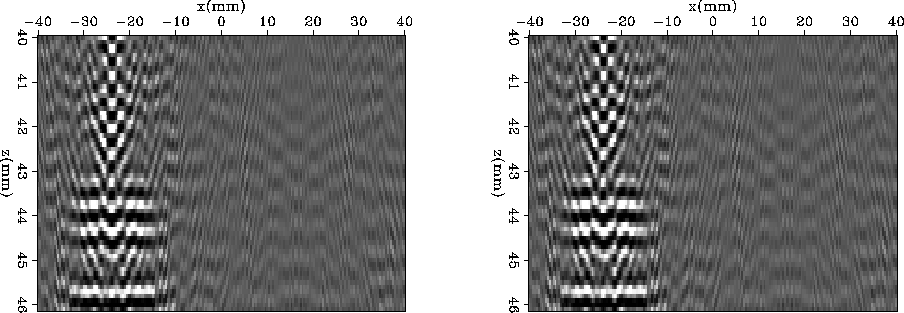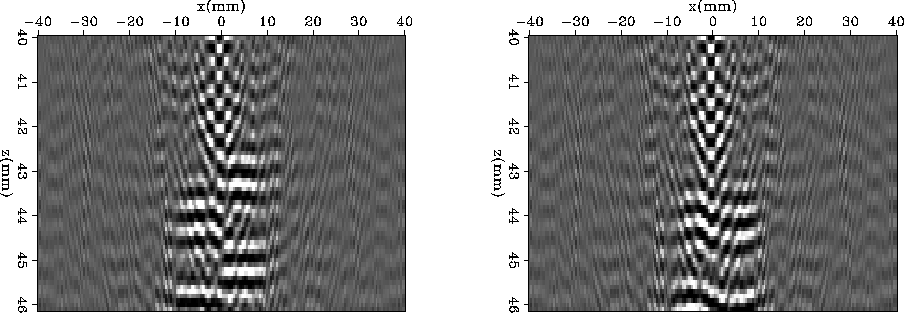




Next: Conclusion
Up: Artman and Clapp: Nondestructive
Previous: Introduction
Figure ![[*]](http://sepwww.stanford.edu/latex2html/cross_ref_motif.gif) shows the data after the far offsets have been
removed. A multiple train caused by the fast middle layer has died
down over the inner offsets at the time of the anomaly. Therefor,
removing the far offsets, we were able to create a nearly multiple
free data volume for imaging purposes. The middle
half of the total offset range was kept. Figure
shows the data after the far offsets have been
removed. A multiple train caused by the fast middle layer has died
down over the inner offsets at the time of the anomaly. Therefor,
removing the far offsets, we were able to create a nearly multiple
free data volume for imaging purposes. The middle
half of the total offset range was kept. Figure ![[*]](http://sepwww.stanford.edu/latex2html/cross_ref_motif.gif) is the image produced by shot-profile migration using all the
available data. Figure
is the image produced by shot-profile migration using all the
available data. Figure ![[*]](http://sepwww.stanford.edu/latex2html/cross_ref_motif.gif) shows the image for the step
anomaly and the scallop anomaly. Identical images were created by
stacking all of the shots and migrating with a planar horizontal
source function, and source-receiver migration (not shown).
shows the image for the step
anomaly and the scallop anomaly. Identical images were created by
stacking all of the shots and migrating with a planar horizontal
source function, and source-receiver migration (not shown).
data
Figure 1 Shot record and time slice of
the inner offsets of modeled data. The time slice shows the anomaly.





alloffsmig
Figure 2 Shot-profile migration
using all available data. Interference from intrabed multiples from
middle layer decreases image quality.
|
|  |




 shotmig
shotmig
Figure 3 Both data sets produce
very clean images when only near offset traces are migrated. Image
produced with shot-profile migration.





To understand the importance of multiple shots, two single shot data
volumes were migrated with shot-profile migration. Figures ![[*]](http://sepwww.stanford.edu/latex2html/cross_ref_motif.gif) is the image from a shot located at the left edge of the model space. The
bottom reflector is very poorly imaged, and their is no indication of
the anomaly. If the shot were located directly over the anomaly, as
in Figure
is the image from a shot located at the left edge of the model space. The
bottom reflector is very poorly imaged, and their is no indication of
the anomaly. If the shot were located directly over the anomaly, as
in Figure ![[*]](http://sepwww.stanford.edu/latex2html/cross_ref_motif.gif) , the anomaly is noticeable though the
quality of the image is poor.
, the anomaly is noticeable though the
quality of the image is poor.
oneshot
Figure 4 Image from a single shot
at the far left edge of the model.




 censhot
censhot
Figure 5 Image from a single shot
directly over the anomaly.










Next: Conclusion
Up: Artman and Clapp: Nondestructive
Previous: Introduction
Stanford Exploration Project
10/31/2005
![[*]](http://sepwww.stanford.edu/latex2html/cross_ref_motif.gif) shows the data after the far offsets have been
removed. A multiple train caused by the fast middle layer has died
down over the inner offsets at the time of the anomaly. Therefor,
removing the far offsets, we were able to create a nearly multiple
free data volume for imaging purposes. The middle
half of the total offset range was kept. Figure
shows the data after the far offsets have been
removed. A multiple train caused by the fast middle layer has died
down over the inner offsets at the time of the anomaly. Therefor,
removing the far offsets, we were able to create a nearly multiple
free data volume for imaging purposes. The middle
half of the total offset range was kept. Figure ![[*]](http://sepwww.stanford.edu/latex2html/cross_ref_motif.gif) is the image produced by shot-profile migration using all the
available data. Figure
is the image produced by shot-profile migration using all the
available data. Figure ![[*]](http://sepwww.stanford.edu/latex2html/cross_ref_motif.gif) shows the image for the step
anomaly and the scallop anomaly. Identical images were created by
stacking all of the shots and migrating with a planar horizontal
source function, and source-receiver migration (not shown).
shows the image for the step
anomaly and the scallop anomaly. Identical images were created by
stacking all of the shots and migrating with a planar horizontal
source function, and source-receiver migration (not shown).




